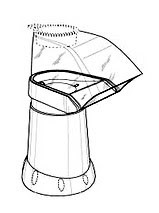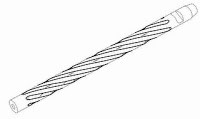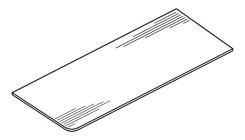Can 3D product designs be trademarked?
Trademarks are commonly known as names and logos. It may surprise you to learn that 3-dimensional product shapes (aka product configurations) may also be registered as trademarks. It’s an uphill battle, but it is possible if register a product design trademark if it serves a source indicating purpose and not any functional purposes.
A product design trademark may also be known as trade dress, so let’s see what constitutes protectable trade dress.
What is the test for registering a product configuration trademark?
To be registrable as a trademark, a product configuration must pass a two-part test.
Part 1: Utility?
(1) Does the product configuration or feature have utility?
If not, then it may be registrable if it is inherently distinctive. If not inherently distinctive, it may be protective it has acquired distinctiveness.
Part 2: If utility, essential to purpose or use of product?
(2) If utility exists, then ask: Is the shape/feature essential to the use or purpose of the device, or does it affect the cost or quality of the device?
- (2A): If Yes, then not registrable
- (2B): If No, may be registrable if it has acquired distinctiveness.
Let’s look at examples of specific product configurations that failed to meet these elements.
Examples of unregistrable product configurations
Unregistrable product configurations that are de jure functional (functional in law) [Question 2A]
- popcorn popper

- rifle barrel with internal and external spiral grooves

Unregistrable product configurations that lack acquired distinctiveness [Question 2B]
- curved handles of electric skillet

- curved corner of yoga mat

How to show acquired distinctiveness
“Look for” advertising
Would consumers associate the product design with a particular company/applicant, and therefore view the product as coming from a single source?
Industry practice
Submit declarations from customers regarding the feature as identifying source.
Product design protection: trademarks vs. design patents
So far, this post has discussed the possibility and process registering three-dimensional product configurations as trademarks. Unlike trademarks, design patents do not require any showing of consumer recognition.
You can obtain design patent protection to cover the ornamental appearance of a product or component without showing any acquired distinctiveness. Functionality, however, may be a valid defense to both trademark and design patent infringement claims.
Need help protecting your product design?
Reach out to US trademark and patent attorney Vic Lin by email or call (949) 223-9623. We can help determine the right IP asset to pursue and execute a strategy to gain protection of your product designs.


